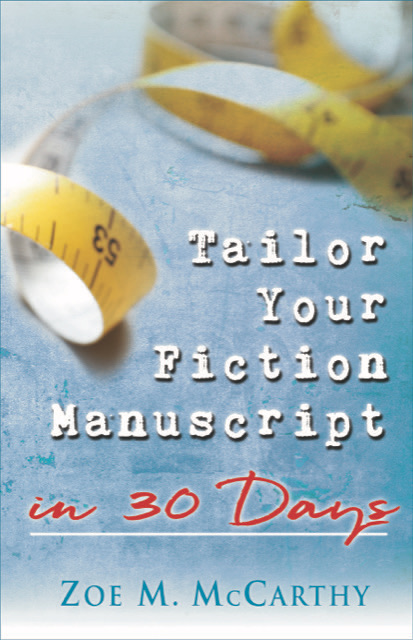

Tailor Your Fiction Manuscript in 30 Days is designed to shape a not-yet submitted, rejected, or self-published manuscript with low ratings into a book that shines. The method can also be a guiding resource for writers starting a manuscript. See details below.
Research is vital to your story. Here are types of research and perhaps the best time to perform them.
Before the Draft
To avoid major rewrites, perform these research tasks upfront.
1. A character’s past significant wound and how it affects him currently. A good resource is The Emotional Wound Thesaurus: A Writer’s Guide to Psychological Trauma by Angela Ackerman and Becca Puglisi..

2. A character’s hobby or profession. Interview a person in the profession to collect stories and ideas for physical and emotional problems, humorous moments, dangers, and day-to-day expectations.
Or search for day-in-the-life type interviews online. For instance, I found an interview of a caddy that allowed me write what a caddy does on and off the job, how he interacts with his pro, and how he thinks.
3. The setting, if it helps drive the story, could cause limits to the plot, or is considered a “character,” such as a museum, haunted house, or a jungle.
During a Draft

Usually this research is a pause to go online to understand the meaning of a word, the name of an object, the character’s surroundings, and the like.
I perform these look-ups because the scene’s plot, dialogue, or characterization depend on the research. I also fear I’ll forget to research the item later.
4. Name of anything the character might use in his job or profession.
5. Times of sunsets, sunrises, tides, whether the place uses Daylight Saving Time.
6. Name of clothing items, such as a Henley shirt.
7. Popular names for a character’s year of birth to name a character’s contemporaries, family members, children.

8. How-tos. I’ve watched videos for such activities as how to create pottery on a potter’s wheel, how to save a drowning person, and how to remove a cover and pages from a book.
9. How to spell words that aren’t in my physical or online dictionaries, such as gully washer.
10. Whether something is possible or not. For example, I wanted to know if a border collie could jump to the backseat of a truck. (Yes.)
11. When I can’t think of the right word. This is when I grab my Flip Dictionary by Barbara Ann Kipfer, Ph.D.
After the Draft
For me, I don’t leave much research to after the draft. But I can understand a writer who’s on a roll, putting off research he knows will affect only one scene. And the research will have minimum effect on the play between characters.
12. Character performs a one-time activity, such as changing a tire.
13. When I haven’t decided on a place for a scene that appears only once in the story. For example, I’m not sure what type of restaurant I want my character dining in and will need a few visuals and sounds when I do decide.
What are other types of research you do and when do you perform them?

Zoe McCarthy’s book, Tailor Your Fiction Manuscript in 30 Days, is a fresh and innovative refocusing of your novel or novella. Through a few simple—and fun—steps, Zoe helps writers take their not-ready-for-publication and/or rejected manuscripts to a spit-polish finish. Writing is hard work, yes, but it doesn’t have to be difficult. —Eva Marie Everson, best-selling and multiple award-winning author, conference director, president of Word Weavers International, Inc.
If you want to increase your chance of hearing yes instead of sorry or not a fit for our list at this time, this book is for you. If you want to develop stronger story plots with characters that are hard to put down, this book is for you. Through McCarthy’s checklists and helpful exercises and corresponding examples, you will learn how to raise the tension, hone your voice, and polish your manuscript. I need this book for my clients and the many conferees I meet at writer’s conferences around the country. Thank you, Zoe. A huge, #thumbsup, for Tailor Your Fiction Manuscript in 30 Days. —Diana L. Flegal, literary agent, and freelance editor
Tailor Your Fiction Manuscript is a self-editing encyclopedia! Each chapter sets up the targeted technique, examples show what to look for in your manuscript, then proven actions are provided to take your writing to the next level. Whether you are a seasoned writer or a newbie, you need this book! —Sally Shupe, freelance editor, aspiring author
McCarthy crafted an amazing self-help book that will strengthen any writer, whether new or seasoned, with guidance and self-evaluation tools. —Erin Unger, author of Practicing Murder, releasing in 2019
Need to rework your book? Zoe M. McCarthy’s step-by-step reference guide leads you through the process, helping you fight feeling overwhelmed and wrangle your manuscript and into publishable shape in 30 days. Tailor Your Manuscript delivers a clear and comprehensive action plan. —Elizabeth Spann Craig, Twitteriffic owner, bestselling author of the Myrtle Clover Mysteries, the Southern Quilting Mysteries, and the Memphis Barbeque Mysteries http://elizabethspanncraig.com/blog/


 RSS - Posts
RSS - Posts



0 Comments